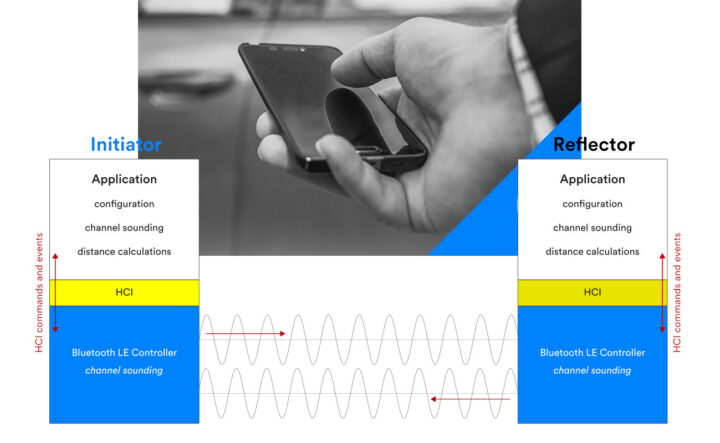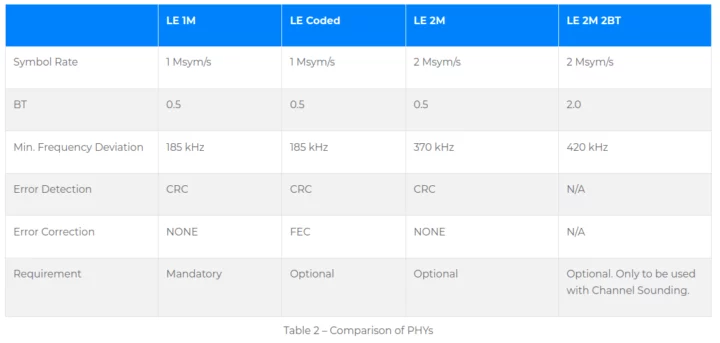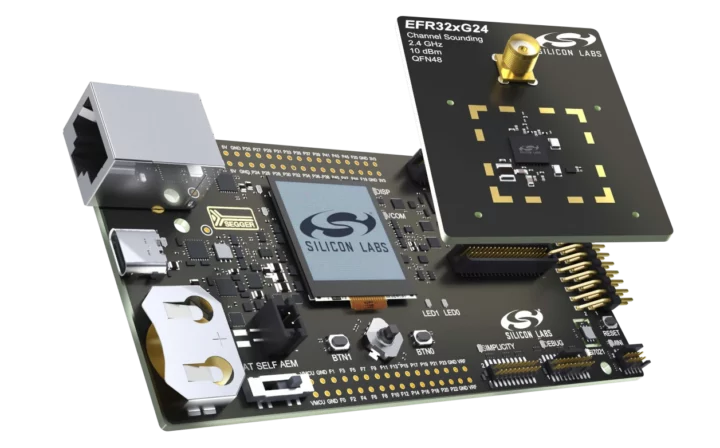The Bluetooth Special Interest Group (SIG) has just announced the release of the Bluetooth 6.0 Core Specification with features and feature enhancements that include Bluetooth Channel Sounding for two-way ranging between BLE devices, decision-based advertising filtering and monitoring advertisers to improve device scanning efficiency, an enhancement to the Isochronous Adaptation Layer (ISOAL) for lower latency and higher reliability, the LL extended feature set, and a frame space update for throughput optimization.
Bluetooth 5.4 was released as a minor update mostly adding electronic shelf label (ESL) support in February 2023, or about 18 months ago, but Bluetooth 6.0 is a major update with the most notable feature being Bluetooth Channel Sounding to enable two-way ranging between two Bluetooth LE devices. It’s not the first time we’ve heard about “Bluetooth Channel Sounding” for distance measurements as it was implemented in WiFi 7/6 and Bluetooth 5.4 chipsets such as Synaptics SYN4382 and Broadcom BCM47722 using Bluetooth draft specifications.

Bluetooth 6.0 key features and improvements:
- Bluetooth Channel Sounding enables two-way ranging between two Bluetooth LE devices with much better accuracy than current “Find my device” solutions. It relies on Phased-Based Ranging (PBR) to deliver precise distance measurements between two devices and a secondary ranging method called Round Trip Time (RTT) rather than RSSI in legacy solutions and promises sub-meter accuracy.
- Decision-Based Advertising Filtering improves the scanning efficiency of a Bluetooth device by reducing the time spent on scanning data packets. More specifically, Decision-based advertising filtering allows a scanning device to use the content of a packet received on a primary advertising channel to decide if it should scan for related packets on the secondary channels, improving scanning efficiency by reducing the time spent scanning on secondary channels for packets that might not contain PDUs relevant to the application.
- Monitoring Advertisers are also designed to improve scanning efficiency, but they rely on the host controller interface (HCI) to track when the devices move in and out of range.
- ISOAL Enhancement – The Isochronous Adaptation Layer (ISOAL) makes it possible for larger data frames to be transmitted in smaller link-layer packets and ensures the associated timing information that is needed for the correct processing of the data by receivers can be reconstituted. ISOAL can produce either framed or unframed PDUs (Protocol Data Units) depending on certain variables. If framed PDUs are produced, latency can be increased as a result. The Bluetooth Core Specification version 6.0 improves ISOAL by defining a new framing mode that increases reliability and reduces the latency that comes with the generation of framed PDUs.
- LL Extended Feature Set – Bluetooth 6.0-compliant devices can exchange information about the link-layer features that they each support.
- Frame Space Update enables negotiable spacing between isochronous streams and connection events, optimizing data throughput. Prior versions of the Bluetooth Core Specification defined a constant value (T_IFS = 150 µs) for the time that separates adjacent transmissions of packets in a connection event or connected isochronous stream (CIS) subevent. In Bluetooth 6.0, frame spacing is now negotiable and may be shorter or longer than 150 µs.

The Bluetooth Core Specification version 6.0 can be downloaded from the SIG website, but if you don’t feel like going through a highly technical document with 3816 pages, you can also check out the features overview, and/or read a technical overview about Channel Sounding to better understand what it does.
Silicon Labs has also just unveiled a Bluetooth channel stack for its xG24 wireless microcontrollers (i.e. BG24 and MG24 Cortex-M33 MCUs), as well as the xG24-RB4198A radio board ($45) and the xG24-PK6036A Pro Kit ($351) programmable with Simplicity Studio Version 5 to quickly get started with the development of applications making use of Bluetooth Channel Sounding.

The BRD4002A Wireless Po Kit mainboard with a BRD4198A Channel Sounding radio board (the kit includes two)

Jean-Luc started CNX Software in 2010 as a part-time endeavor, before quitting his job as a software engineering manager, and starting to write daily news, and reviews full time later in 2011.
Support CNX Software! Donate via cryptocurrencies, become a Patron on Patreon, or purchase goods on Amazon or Aliexpress




